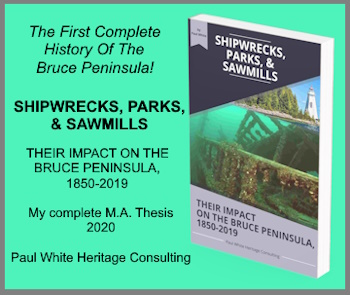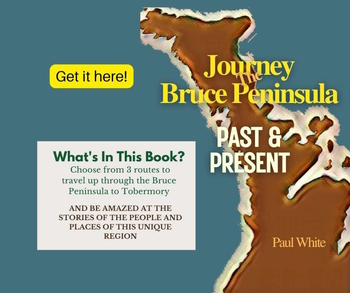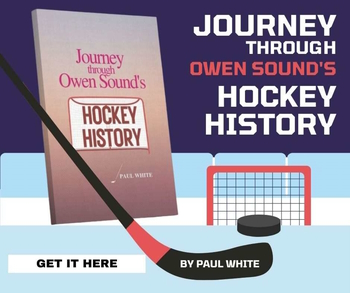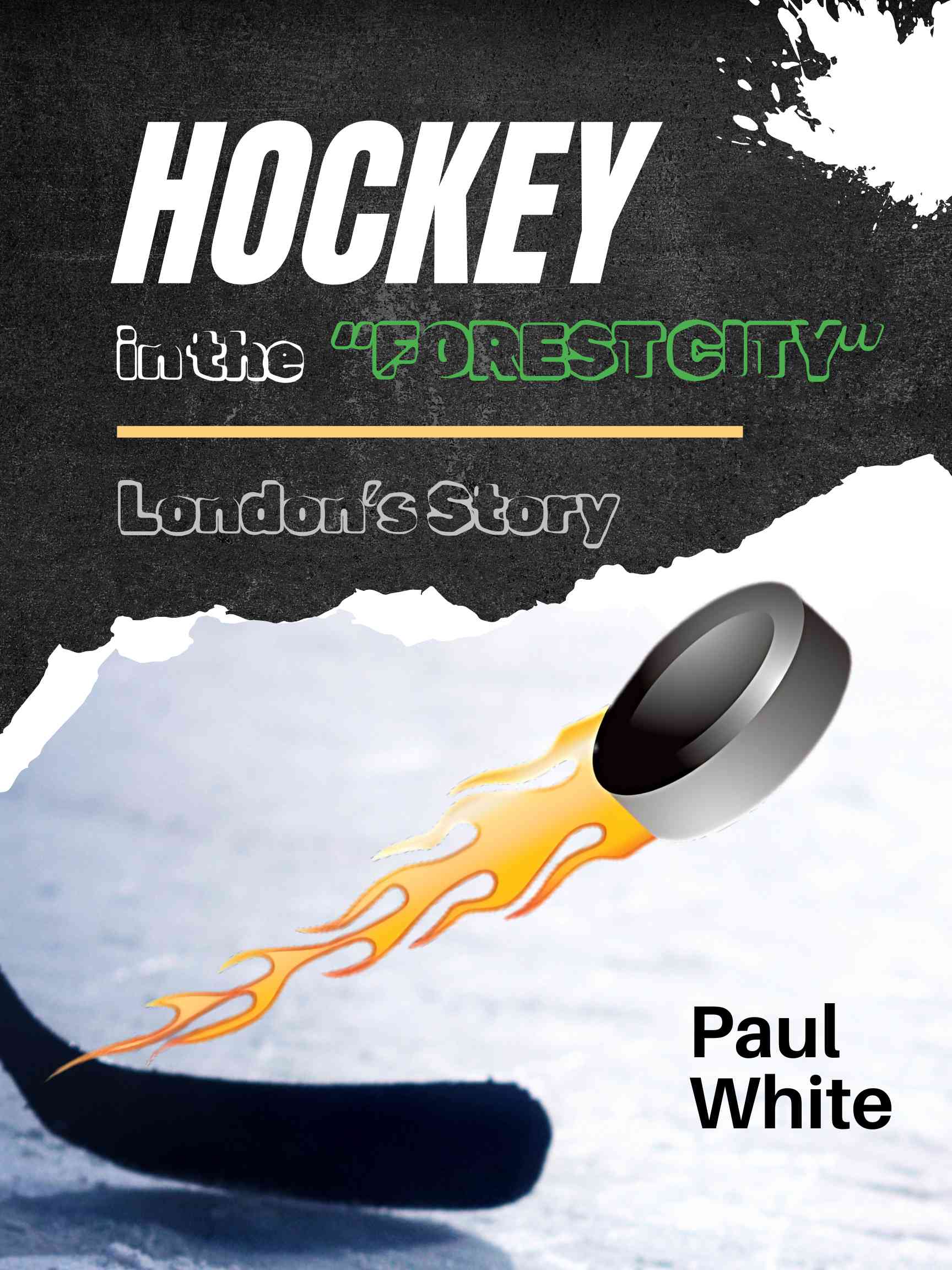Paddling Georgian Bay & Pondering
Paddling Georgian Bay & pondering while traversing parts of this great waterway in a canoe leads one to wonder about the ships of a bygone era battling the rough seas they encountered.
Looking at a Georgian Bay map, one is struck by the vast territory that this body of water encompasses. However, the Georgian Bay region is in fact a closely-bound community. Throughout history, shipwrecks, storms, and other disasters have impacted throughout the region.
Recently I travelled to an area just north of Parry Sound to canoe Georgian Bay's east shore. As I travelled up Highway 69, I noticed that the car radio was receiving a signal strong and clear. Because this is not always the case with radio stations in this area, I checked to see which strong Toronto station was beaming into the area. Surprise! It was the Owen Sound FM channel! A quick check revealed that the AM channel came in equally clear.
Further investigation revealed that most of the area was plugged into the Owen Sound station. Even across the broad expanse of Georgian Bay, the radio waves served as a linkage between the two shores. This sharing of events should not have been a surprise to me, as my research of Grey-Bruce's history has always revealed coverage by local newspapers of events throughout the Georgian Bay area.
As we paddled the relatively calm waters between the offshore islands and the mainland, I envisioned 19th century schooners and steamers racing to these safe havens to ride out the storm-enraged Georgian Bay. The reality of this circumstance struck us like an open water wave hitting our canoe broadside as we left the serenity of the inlets and bays and ventured into the open waters.
As we paddled, I realized that we were almost exactly in the spot where it is believed that the Waubuno floundered and sank on a stormy day in November 1879. This tragic event provides a perfect illustration of the sense of community which existed on Georgian Bay in the 1800s and to some degree, still exists over a century later.
The Wiarton Echo literally bumped all its other stories off the front page to give in depth coverage to the event. The Owen Sound newspapers also reported the sinking in great detail. All newspapers listed the names and hometowns of all those who lost their lives .
The newspapers reported that the north shore was "strewn with portions of the upper works of a steamer, and barrels of flour and casks of butter have been washed ashore." At first, there was uncertainty about whether the wreckage was that of the Waubuno, but when the steamer failed to arrive at Parry Sound, two rescue vessels, the Mary Ann and the Mattie Grew, were dispatched from Collingwood. These tugs returned after "picking up several pieces of the wreck and some mattresses belonging to the missing steamer."
It was then determined that the Waubuno had indeed sunk and the 13 passengers and 14 crew members had perished. One of the deceased, was B.N. Pisher, the editor and proprietor of the Parry Sound North Star.
Throughout the winter of 1879-1880, the Waubuno remained newsworthy in local newspapers. Sightings of what was thought to be the sunken vessel were reported. Speculation ran rampant in all the gathering places along both shores of Georgian Bay as to what really happened, and families and friends of seamen who sailed these waters hoped and prayed that they would never experience the tragedy of Waubuno in their homes
Because the Waubuno had provided ferry service from Collingwood to Parry Sound, other ships were pressed into carrying people, freight, and news to the relatively remote Parry Sound region. The Collingwood Messenger described in detail a trip made by the Northern Queen on the Collingwood to Parry Sound route.
Paddling Georgian Bay's eastern shoreline in relatively calm waters, my canoeing partner and I were struck by the serenity and beauty of that particular area.
But the recollection of the Waubuno tragedy and other shipwrecks reminded me that, while nature could provide us with such magic moments, it could be just as harsh and seemingly uncaring, as it was generous in its moments of beauty and pleasure.
A version of this article originally appeared in my Local History column in the Owen Sound Sun Times on August 12, 1996.
Georgian Bay Shipping
List of Lighthouses on the Great Lakes: If you have names and/or pictures of Great Lakes Lighthouses please submit them along with details of their location.
Georgian Bay Ships: A List of all the ships that sailed on Georgian Bay until the 1960s. This list is not complete. If you know of a ship that sailed the waters of Georgian Bay please contact me with information about that vessel, and, if you have a picture that I could post with it, that would be much appreciated.
1885: A Memorable Summer Job for Owen Sound teenage boys on the Great Lakes would have historic importance, not mention a possible exciting career opportunity.
Hindman Transportation Company was a well-known Great Lakes shipping company for many years. Here you will find pictures of many of the Hindman ships
Owen Sound Harbour – A Photographic History, by Robert A. Cotton is a book that interests my historiographical curiosity.
Commercial Great Lakes Fishing It is probably safe to suggest that the commercial fishing industry was an important part of the early growth of this region.
A Georgian Bay fishing vacation has long been a popular attraction in the Bruce Peninsula region. During fishing derbies, the regional waterways are dotted with fishing boats of all shapes and sizes.
The Georgian Bay Mackinaw, designed by William Watts of Collingwood is an example of a Georgian Bay innovator creating a vessel to service the needs local mariners.
Great Lakes fishing is an asset that is protected and developed, not only for its economic potential but also for those who just enjoy spending a day by the side of a river or in small fishing boats trying to catch “the big one”!
Great Lakes Fishing History is not without its controversy. The impact of the fishing industry was such that it played an important role in the development of communities along the Georgian Bay and Lake Huron shoreline.
Georgian Bay Travel Before the Winter Freeze-Up could be a dangerous time for mariners in the early years in this region.
A Harbinger of Spring on the Great Lakes in pioneer times, was the eagerly awaited news that a lighthouse had been lit and shipping traffic could begin sailing from port to port.
Lumber Hookers Lumber hookers and tugs were an important innovation to improve the transportation of lumber on Georgian Bay.
Mapmakers on Georgian Bay were also explorers. They mapped the Georgina Bay shoreline noting safe harbours, dangerous reefs and other guides for sailors and pioneer settlers looking for a place to call home.
Paddling Georgian Bay & Pondering: traversing parts of this great waterway in a canoe leads one to wonder about the ships of a bygone era battling the rough seas they encountered.
Parry Sound Shipping History: The Parry Sound area has always been connected to the southern regions of the Province of Ontario by a system of good roads. Or has it?
Parry Sound’s shipping history 2 is more than the tragic sinking of the Waubuno or the later catastrophe surrounding the sinking of the Asia.
Sailing Season Closing: A Frantic Time on Peninsula as ships raced from port to port delivering and picking up passengers and produce before the waterways froze.
Ship Captain Andrew Port was not only a dynamic and brave Georgian Bay mariner, he was a personal favourite historical character of mine.
Ships Stuck in Ice: The Oak Glen was icebound in 1996 but this sailing hazard has been impacting vessels on Georgian Bay since the beginning of time.
Lake Huron shipwrecks, the Hibou often occurred in the Georgian Bay region of that Great Lake due to the often violent waters that could strike unsuspecting vessels like the Hibou.
Shipwrecks: The "Asia" wrecked off the eastern coast of Georgian Bay taking all but two of the more than 100 passengers to a watery grave.
Masters, Mates, and Pilots Association created its first Canadian chapter on Georgian Bay, providing maritime safety education, and other seafaring issues to better inform its membership.
Pioneer Travel Aboard the Fly Tells the story of a sailing vessel as the tenuous link between survival and death in a pioneer settlement in the 1840's in Upper Canada.
Sailing Stories: the Captain Who Smelled his way into Port The Captain Who Smelled his Way into Port details how pioneer seamen on Georgian Bay safely sailed the rough waters without the aid of the modern technological tools so readily used by today's mariners.
Sailing Story: The Voyage of the Prince Alfred the incredible voyage of the Prince Alfred, fraught with danger for both vessel and the crew in the winter of 1880.
Shipbuilding As the southern Georgian Bay region became more populated shipping traffic increased to meet the needs of an expanding market place.
The Summer of 1844 was No Picnic for the early settlers in the pioneer area near what would become Owen Sound on Georgian Bay.
The CPR Grain Elevator Fire of 1911 spelled the end of Owen Sound's role as the eastern terminus of the CPR Great Lakes Fleet.
Georgian Bay shipping occurred long before the first Europeans paddled these waters. But the fur and timber trades opened Georgian Bay to shipping in a big way!





